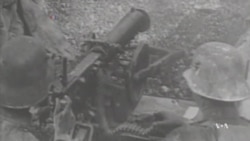A century ago at the beginning of the First World War, the maps of Europe, Asia and Africa looked much different than they do today. Historians say many of the border changes - agreed upon after the war - were made for political rather than economic reasons, creating new problems whose impact can be felt even today.
After four years of carnage and more than 16 million dead soldiers and civilians, three empires that had lasted for centuries - Austro-Hungarian, Russian and Ottoman - gradually ceased to exist and many new nations emerged, says Mike Heffernan, professor of historical geography at the University of Nottingham.
"Poland was reconstituted in the East; the Baltic republics of Latvia, Lithuania and Estonia are established. The Austro-Hungarian Empire, this vast zone to the southern part of Europe, is divided up into a range of smaller states," said Heffernan.
It took about five years and several treaties to dismantle the three empires. The new nations welcomed their new independence, but Heffernan says experts who advised national delegations during the negotiations were not economists.
“They tended to be historians, geographers and classically trained Oxford academics for example, who were not necessarily aware or mindful of creating a new economically integrated and viable European world," said Heffernan.
The old empires had provided a degree of stability, so many had trouble adjusting to life under a different rule, says Margaret MacMillan, professor of international history at Oxford University.
“Suddenly people throughout the Middle East and the center of Europe found themselves living in a world where they didn't know what country they belonged to; it wasn't quite clear what the borders of those countries would be; a whole lot of small wars were breaking out between different national movements trying to grab territory, and so it was in fact a very difficult time for people," said MacMillan.
The peace lasted merely a couple of decades and a new conflict was already brewing. Even the Second World War did not solve all the border problems. The peace lasted longer, but as soon as the Soviet Empire fell apart, new conflicts broke out. Again, the maps had to be redrawn.
Stanislao Pugliese is a European history professor at Hofstra University in New York. He says most people do not understand that maps are often times arbitrary and usually do not correspond to culture and politics. He spoke via Skype.
“We might think that borders are sacred and sacrosanct and immutable, but history has told us that they aren’t," said Pugliese.
Pugliese says only a couple of decades ago, nobody could picture the Soviet Union ceasing to exist, which also changed the lines on the maps. They should not be expected to last forever, either.





